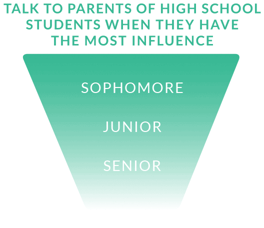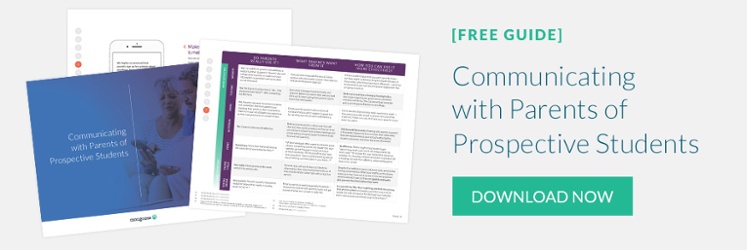
Start sooner, since parents’ influence is the strongest earlier in the process
Parents are typically most influential at the
The early bird gets the attention
If you’re one of the first colleges to contact a parent — before their mailbox and inbox are overflowing — you’ll have a better chance of breaking through the clutter. Parents are often most excited about the process at the
Remember that parents’ engagement increases over time
Even though parents have less influence as the process goes on, they become more involved. This makes sense when you realize that students often need their parents’ help to manage the logistics of visiting campuses, applying for financial aid, and all of the other steps involved. For example, while 80% of parents of sophomores have acted to support their student’s enrollment (which is still a high number), 98% of parents of seniors have done so.
Opportunity
Focus less on “selling” your institution to parents at the end of the process, when they’re often just trying to look up deadlines, find forms and gather additional information forms or other [post-decision] information. Instead, make it easy for parents to complete these tasks. For example, Xavier University asked parents of admitted students if their child was likely to deposit; if a parent said “maybe,” Xavier asked them what additional information they needed to support their child.
Want to learn more?
Our full report on parents covers everything from which topics are important to parents, to the most effective communications strategies for parents of Gen-Z students.






.webp?width=57&height=74&name=users-love-us-4fca521cb6d80c30d02e3df6bd0013f5395fb3ae22e81b3e3608e258d8feba63%20(1).webp)